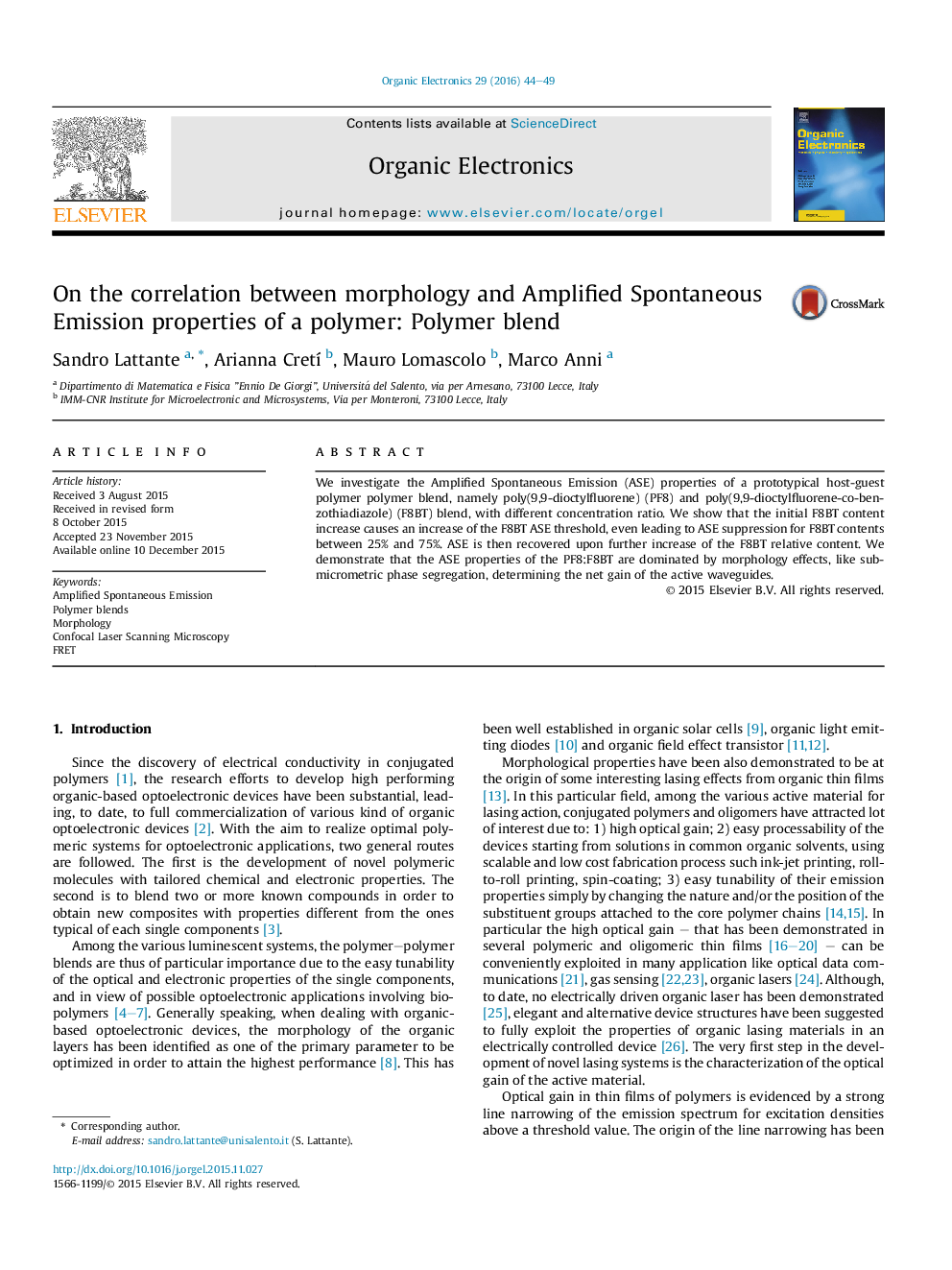| Article ID | Journal | Published Year | Pages | File Type |
|---|---|---|---|---|
| 1264260 | Organic Electronics | 2016 | 6 Pages |
•Polymeric blends are of key importance in novel optoelectronic applications.•Morphology of polymeric blends is a key parameter to be optimized to obtain the best performing devices/applications.•The optical gain properties of a host:guest polymeric system are dominated by morphological effects.•Optimizing optical gain via morphological control of the blends is a key factor for applications like optical data communication, gas sensing, lasing.
We investigate the Amplified Spontaneous Emission (ASE) properties of a prototypical host-guest polymer polymer blend, namely poly(9,9-dioctylfluorene) (PF8) and poly(9,9-dioctylfluorene-co-benzothiadiazole) (F8BT) blend, with different concentration ratio. We show that the initial F8BT content increase causes an increase of the F8BT ASE threshold, even leading to ASE suppression for F8BT contents between 25% and 75%. ASE is then recovered upon further increase of the F8BT relative content. We demonstrate that the ASE properties of the PF8:F8BT are dominated by morphology effects, like submicrometric phase segregation, determining the net gain of the active waveguides.
Graphical abstractFigure optionsDownload full-size imageDownload as PowerPoint slide
